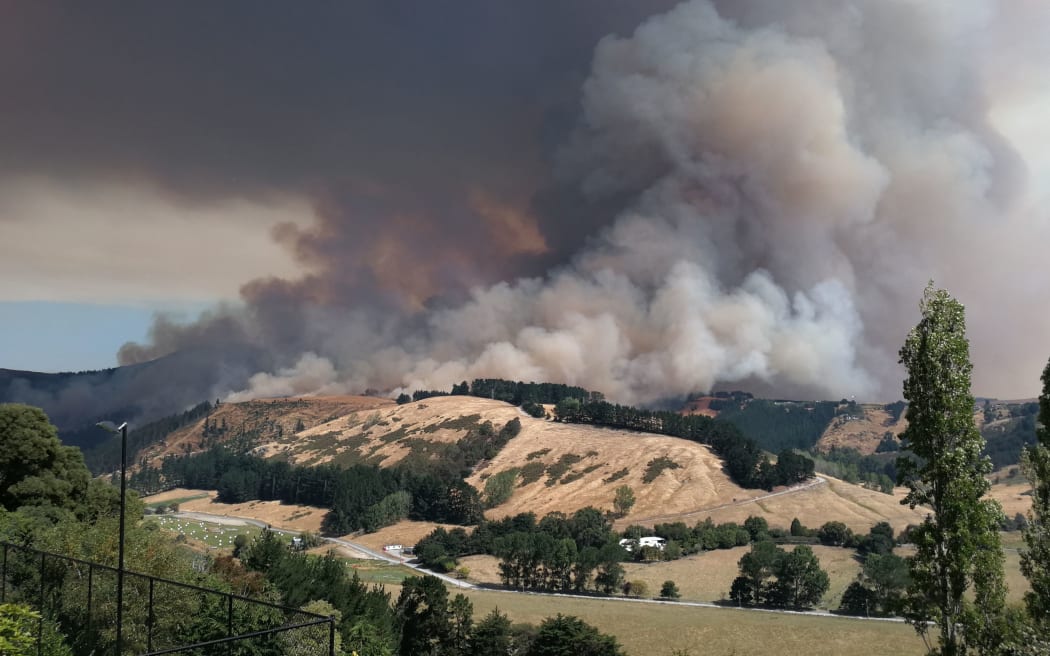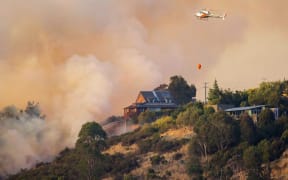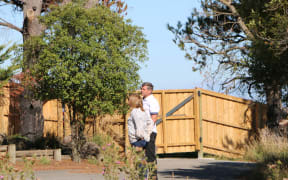Doors removed from a helicopter that crashed during Christchurch's Port Hills fires, killing the pilot, had led to fluctuating air pressure in the cabin, an investigators report has found.

The fire burns near Worsley Valley in the Port Hills on 16 February 2017. Photo: Supplied / Richard Vance
Pilot and decorated soldier Steve Askin was killed when the Squirrel helicopter crashed as he was fighting the blaze on 14 February 2017.
The helicopter crashed as it was returning to a pond to refilling its firefighting monsoon bucket.

Pilot Steve Askin, who had previously served in the SAS, was killed in the crash. Photo: Supplied / NZDF
Nine homes were destroyed, five more were damaged and thousands of people were forced to evacuate their properties. It was 66 days before the fire was fully extinguished.
The Transport Accident Investigation Commission (TAIC) has released its report into the crash.
It said it was very unlikely Mr Askin's recent use of cannabis impaired his performance at the time of the accident.
Chief accident investigator Captain Tim Burfoot said the doors on the pilot's side of the helicopter had been removed so Mr Askin could see the monsoon bucket more easily.
"The doors on the left side were closed. This door configuration was prohibited in the flight manual."
Captain Burfoot said it was likely that fluctuating air pressure, combined with turbulence, forced a side window panel into the cabin before it fell out through an open door.
"The pilot reduced speed, causing the tail rotor to dip. The monsoon bucket swung up and backward, and the bucket line damaged the tail rotor assembly.
"This made the helicopter uncontrollable and it crashed."
The report said the 38-year-old had experienced a similar loss of the left rear window while flying the same helicopter on a firefighting mission in 2015 but had not informed his bosses.
Aviation Industry Association chief John Nicholson said it was really important that issues like that be notified to the authorities.
"We encourage everyone to report every incident because the better the reporting, the more we learn from them.
"This was an individual decision as I understand it where the decision was made not to report it and the company didn't know anything about it, so all reporting comes down to individuals [taking] responsibility."
TAIC identified two main safety issues during its investigation.
One is that there may be a lack of awareness within the helicopter industry of the additional risks involved in using monsoon buckets during firefighting operations.
"[Also] the operator did not have adequate systems available for the pilot to determine the actual all-up weight and balance of the helicopter for the firefighting operation, or to ensure that incidents such as the previous loss of a window were recorded, notified to the CAA and investigated."
The commission identified several lessons as a result of the crash, including that flying in turbulent conditions requires special care so pilots don't exceed aircraft limits.
"It is important that operators and pilots understand the reasons for and observe the specific limitations applicable to each aircraft that they operate, as variations often exist between different variants of the same aircraft type."
TAIC also recommended that all incidents be recorded and investigated by the aircraft operator so the causes can be identified and corrective or preventive actions taken.
Mr Nicholson said the public could be confident that the industry was not being operated by 'cowboys', as activity reports from the helicopter sector show.
"We know the number of hours being flown by helicopters in the last five years has gone up by 50 percent and the accident rate has come down in that time, so we're seeing more flying, more safely."
Mr Nicholson said the issues raised in today's TAIC report would be discussed at next month's Aviation Industry Association conference.
Steve Askin's employer - Rob Kittow who owns Way to Go Heliservices - said he had nothing to add to the TAIC report.
"We don't want the wrong message going out there that this company is inadequate so we have worked with the Transport Accident Investigation Commission on their whole investigation."
Steve Askin's family also refused to comment on the TAIC report, with his father, Paul Askin saying nothing they could say would bring him back.




